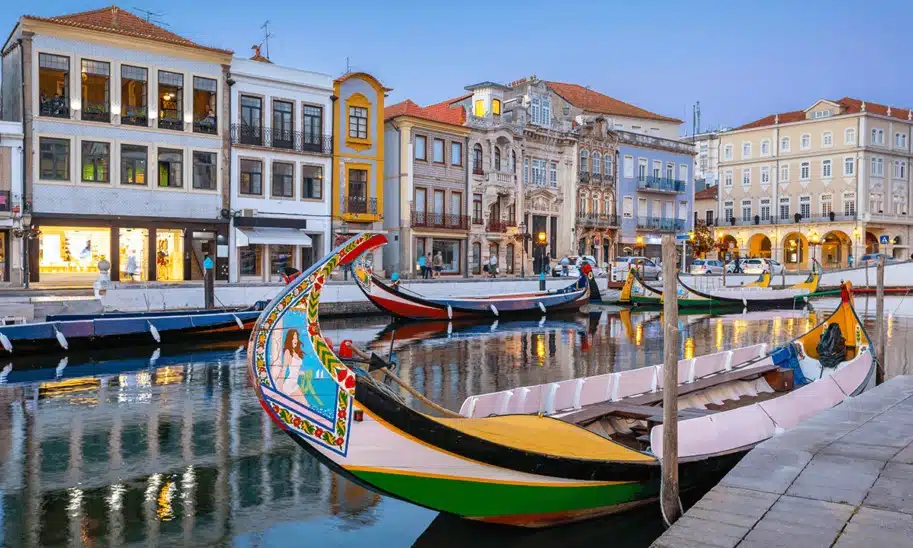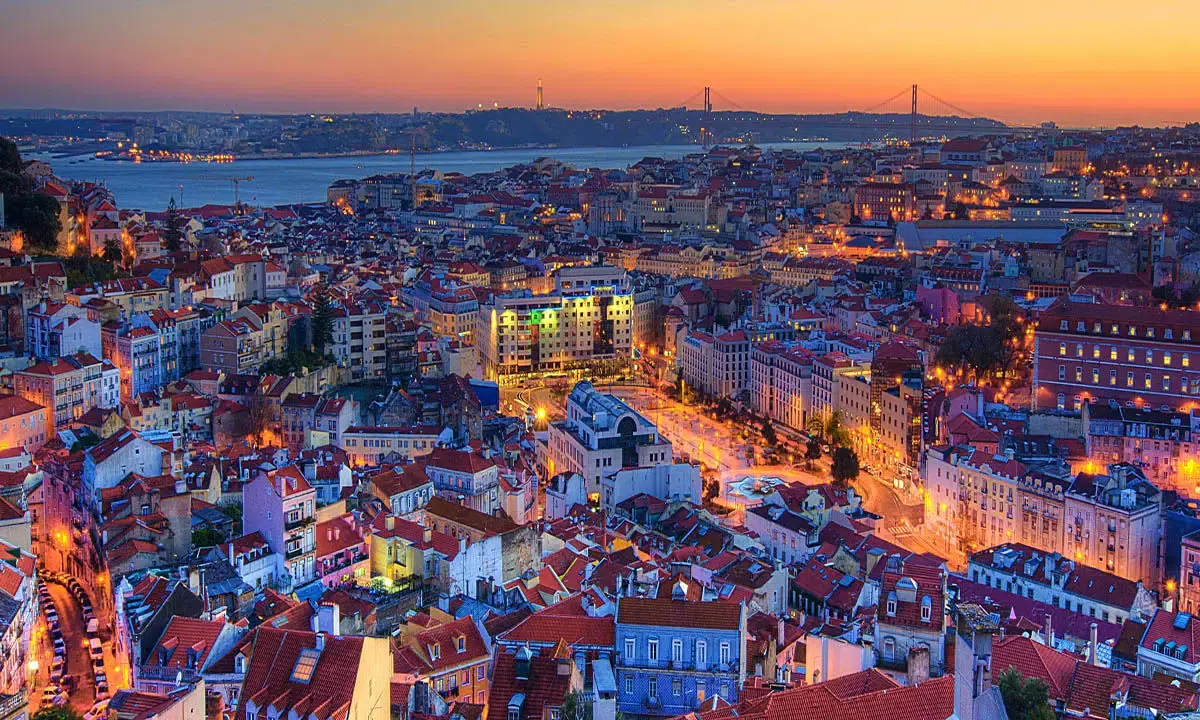Lisbon, the capital city of Portugal, is a vibrant and historical destination with plenty to offer. Here is a comprehensive travel guide to help you make the most of your visit:
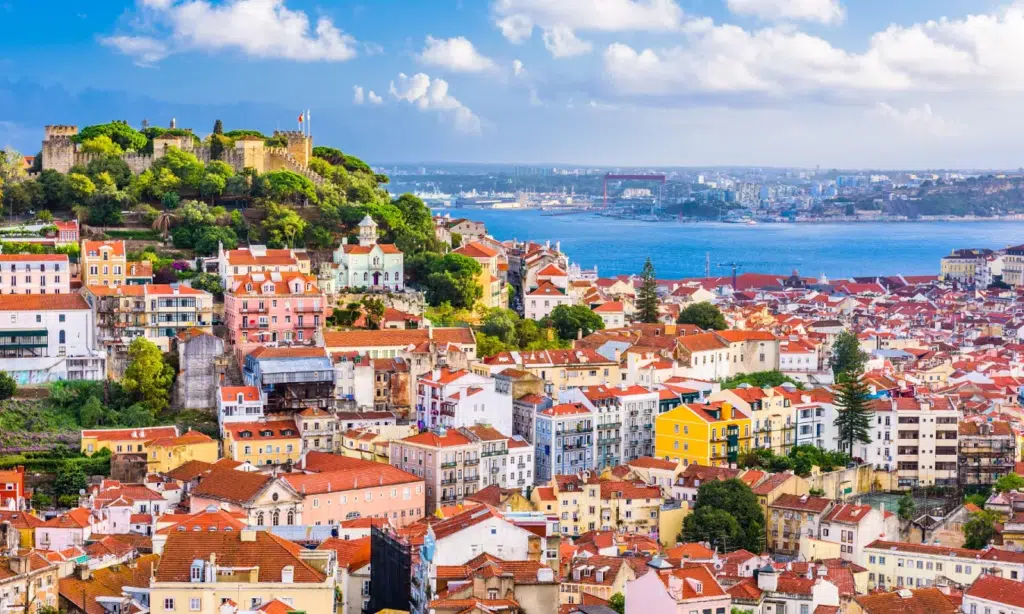
©Canva
Our website includes affiliate links. So, remember that we may receive commissions when you click our links and make purchases. Please read our legal disclaimer document for more information about our Affiliate disclaimer and other disclaimers like the Fair-Use disclaimer.
Why visit Lisbon?
Lisbon is renowned for its hilly streets, picturesque alleys, colorful tiles, and breathtaking views of the Tagus River. The city offers a unique blend of traditional and modern culture, making it an exciting place to visit. Lisbon also has a rich history, being one of Europe’s major trade centers during the Age of Discovery.
With its impressive monuments, vintage street cars, and magnificent bridges, Lisbon is a fascinating city to explore. In 2023, it was ranked number 1 in the top 10 European cities to visit, thanks to its affordability and proximity to major capital cities like Madrid, Paris, and London. It’s an ideal destination for a weekend break or extended stay.
Getting to Lisbon
Lisbon is a city that is easily accessible from major cities worldwide. The main gateway to the town is the Lisbon Portela Airport, which is served by numerous airlines offering direct flights. From the airport, you can take a taxi, an Uber ride, or public transportation to get to the city center.
There are various ways to reach Lisbon, including international rail links and cruise ship ports. The A1 and A2 highways offer national and international connections if you prefer to drive.
If you travel by air, the Lisbon International Airport is only 7 km from the city center and is served by leading international airlines. You can also travel by train, with Santa Apolónia station close to all traditional neighborhoods and Terreiro do Paço.
If you arrive by sea, you can moor at Alcântara, Rocha Conde de Óbidos, or Santa Apolónia. If you arrive by yacht, there are several marinas along the river where you can dock.
So, if you’d like to see valuable flight deals, we recommend visiting Sky Scanner, but if you’d like to go by bus or train, you can find valuable deals in Omio.
How to Get Around Lisbon
Public transportation:
Lisbon’s efficient public transportation system includes metro, buses, trams, and trains. The metro is an easy and convenient way to navigate the city. Trams, particularly Tram 28, offer a scenic and traditional mode of transport. Consider purchasing a rechargeable Viva Viagem card for discounted fares.
So, if you want a train or bus ticket, please visit Omio.
The best things to do
Enjoy all those stunning views from Lisbon’s miradouros
Lisbon has many miradouros, or vantage points, to admire the city’s sights. São Pedro de Alcâtara and Miradouro da Graça are popular with locals. At the same time, TOPO, a terrace bar in a shopping center, offers stunning panoramic views.
Planning tip: The best time to visit is sunset, when Lisbon’s golden light illuminates the city.

©hometown-lisbon.com
Take advantage of a live fado performance.
Fado, Portugal’s national music, expresses the country’s wistful yearning, or saudade. Originating among Lisbon’s sailors and dock workers in the 19th century, fado has become an integral part of Portuguese culture. Visitors to Lisbon should experience a live fado performance in the Alfama neighborhood, where many restaurants offer shows. The Museu do Fado in Alfama showcases fado artifacts, including the genre’s first recordings and pear-shaped guitars.
Ride the historic tram 28E
If you plan to visit Lisbon, ride the iconic vintage electric trams around the city that have been around since the early 1900s. Tram 28E is the most famous line, taking you through the city center and passing many vital sights, neighborhoods, and lookouts. It’s a unique experience that you will want to experience.
Planning tip: To explore Lisbon by tram, consider other vintage routes besides the famous 28E line. While these trams offer a unique and charming experience, there may be more comfortable and efficient ways to get around the city. For a more practical option, the metro or bus networks are recommended.

©Shutterstock
Major Attractions:
We invite you to read our related article to see even more of the top attractions.
- Belém Tower: To explore Lisbon’s UNESCO World Heritage sites, check out the iconic city symbol fortified tower. Its stunning architecture and rich history make it a must-see destination for anyone visiting Lisbon.
- Jerónimos Monastery: Another UNESCO site, this stunning monastery showcases Manueline architecture.
- Alfama: If you want an authentic experience, we highly recommend exploring Lisbon’s oldest district. The narrow streets, Fado music, and charming atmosphere make Lisbon a must-see destination for anyone visiting the city. You’ll feel like you’ve been transported back in time as you wander through the cobblestone streets and soak up the local culture.
- São Jorge Castle: This medieval castle, perched atop a hill, offers panoramic city views.
- Baixa District: The heart of Lisbon, also known as Baixa, is a vibrant and bustling area filled with shops, cafes, and grand plazas. With its charming architecture and lively atmosphere, Baixa is a popular destination for locals and tourists. Whether you are looking for a place to shop, dine, or soak up the local culture, Baixa has something for everyone. Be sure to check out the Praça do Comércio, one of the city’s grandest plazas, and the Rua Augusta Arch, a stunning triumphal arch that serves as a gateway to the city’s historic center.
- Chiado and Bairro Alto: Known for its trendy vibe, these neighborhoods are perfect for shopping, dining, and nightlife.
- LX Factory: A vibrant cultural hub featuring art galleries, boutiques, restaurants, and street art.
Note: Check Viator if you’d like to find valuable deals on visiting the city’s major attractions.
Sao Jorge Castle above the old town
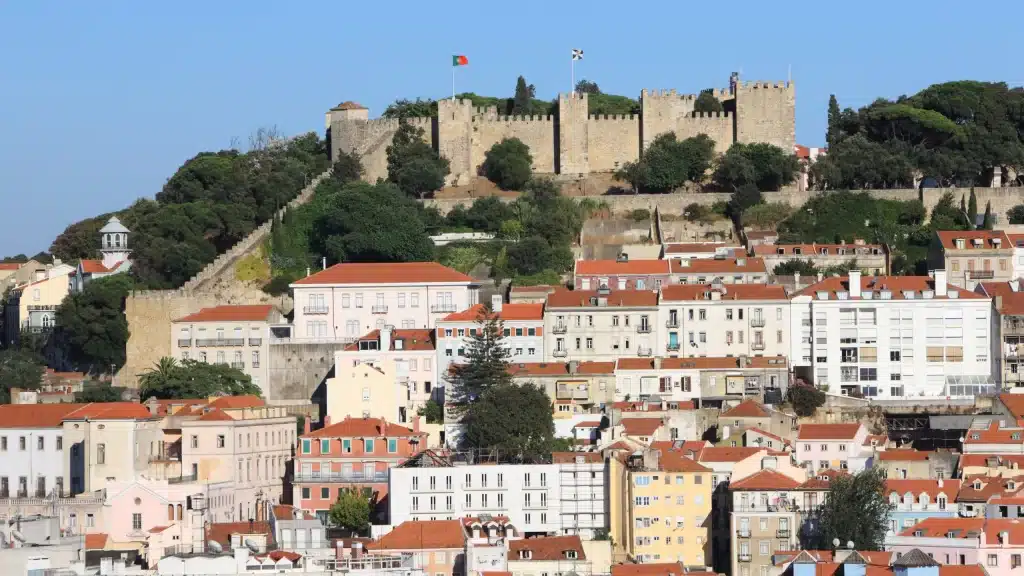
©Getty
City Pass:
Lisbon offers the Lisboa Card, free or discounted access to various attractions, unlimited public transportation, and discounts at selected shops and restaurants. It is available 24, 48, or 72 hours, allowing you to explore the city at your own pace.
Pena Palace in Sintra – a famous town near Lisbon

©Istockphotos
One-Day Trips from Lisbon:
1. Sintra: A fairytale-like town known for its castles, palaces, and enchanting landscapes, Sintra is just a short train ride away.
2. Cascais and Estoril: These coastal towns offer beautiful beaches, charming marinas, and a lively atmosphere.
3. Óbidos: A medieval walled town that will transport you back in time with its narrow streets and picturesque white houses.
4. Fatima: A pilgrimage site for Catholics, Fatima is home to the Basilica of Our Lady of Fatima.
5. Arrábida Natural Park: Explore stunning beaches, vineyards, and hiking trails in this natural paradise.
Note: If you wish to learn more about the best day trips from Lisbon, we suggest reading our related article.
When to Go to Lisbon
The best time to visit Lisbon depends on your preferences and budget. Peak season is from June to August and is the busiest time, but still worth visiting for the lively atmosphere and beach scene. The shoulder seasons of April-May and September-October are cheaper with fewer crowds. Winter lasts from November to February, with colder weather and fewer tourists. Lisbon is still warmer than most of Europe during this time, making it an excellent choice for those looking to avoid harsh weather conditions.
Note: You can also check out our related article for more information.
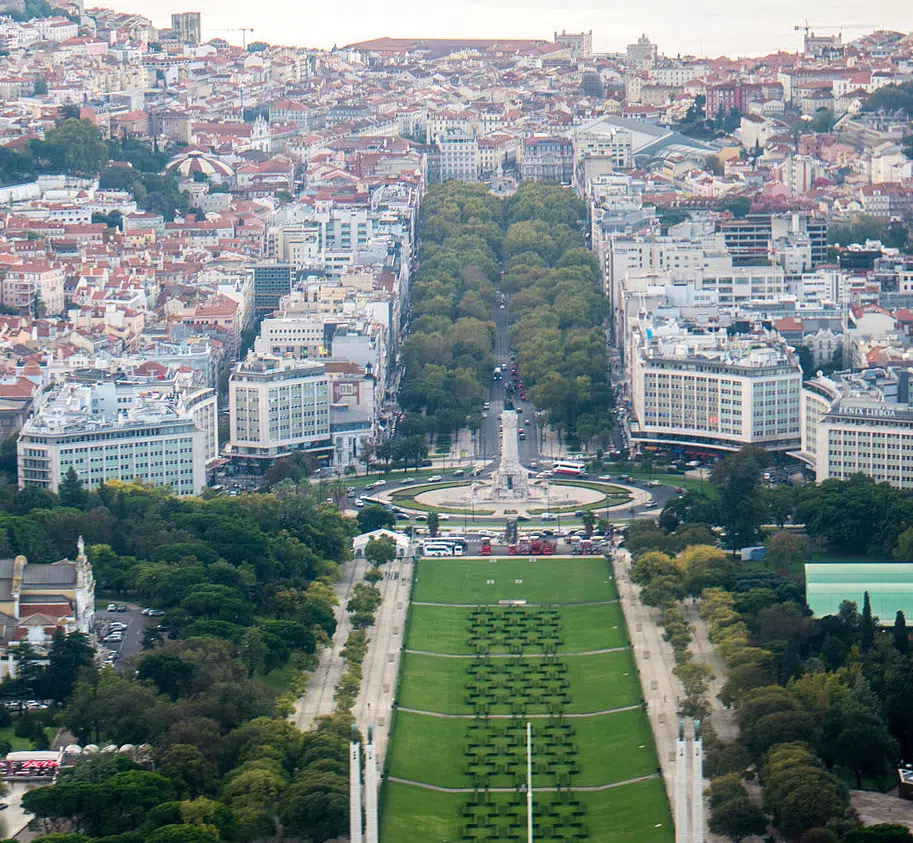
©Alexander Svensson/ flickr.com
Where to stay
For the best area to stay in Lisbon, we recommend Avenida da Liberdade, which offers a variety of accommodation options near popular locations like Rossio Square, Praça do Comércio, and Marquis of Pombal Square. This area is well-connected to the rest of the city and has plenty of things to do and see. Other neighborhoods to consider are Alfama for a traditional experience, Bairro Alto for nightlife, Príncipe Real for trendy bars and shops, and Baixa for luxury hotels and historic buildings.
Note: If you are ready to find fantastic deals, visit Booking.com and check out their selection of gay hotels and other gay-friendly accommodations.
Best Areas to Stay:
1. Baixa: Central location, close to major attractions, shopping, and restaurants.
2. Chiado: Known for its bohemian atmosphere, shopping, and lively nightlife.
3. Alfama: Stay here for an authentic Lisbon experience, Fado music, and proximity to the castle.
4. Bairro Alto: The vibrant neighborhood is famous for its nightlife and entertainment.
5. Belém: Quieter area with historic attractions and beautiful riverfront views.
Note: Check Viator if you’d like to find some valuable deals for visiting the city’s major attractions.
Bairro Alto
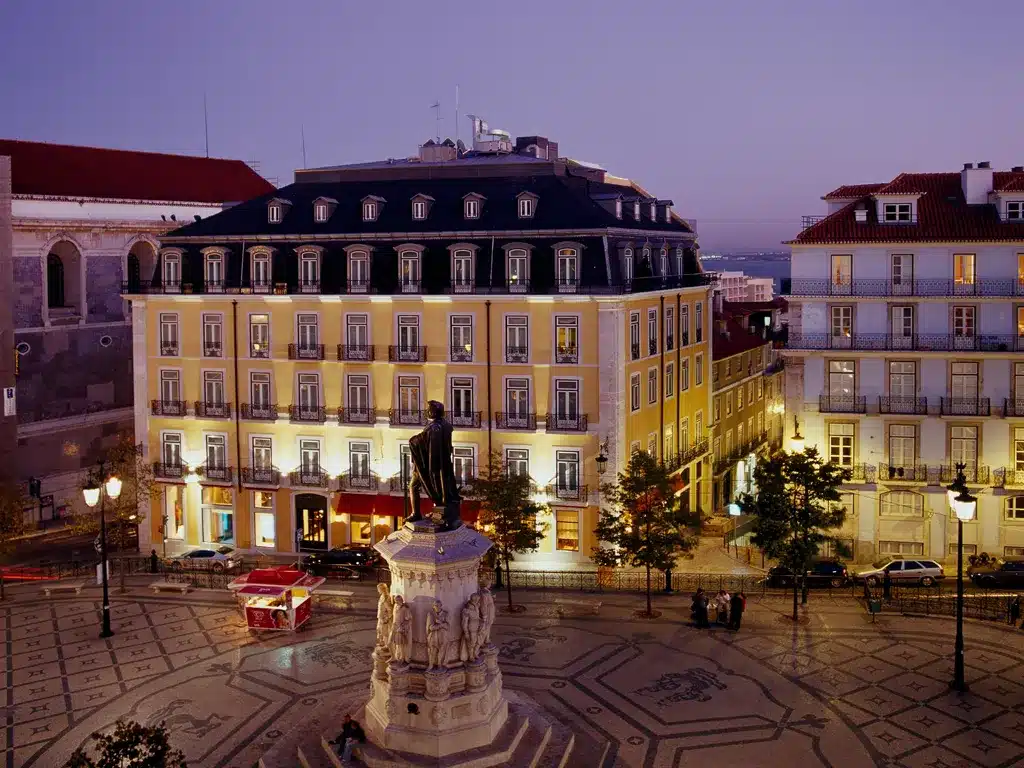
©Bairro Alto Hotel
Safest Neighborhoods In Lisbon
Lisbon’s upscale and safe neighborhoods are closer to the river and more centrally located. Baixa-Chiado is a popular area with many excellent bars, restaurants, and cafes, ensuring safety day and night. Parque das Nações is a quieter area with green spaces and is popular with local families. Lapa is an upscale neighborhood with well-maintained public spaces, old mansions, and tree-lined streets.
How to Stay Safe in Lisbon
Lisbon is safe for travelers, including solo female travelers. Violent attacks are rare, but pickpocketing is common. Keep your valuables secure and be aware of your surroundings. Refuse drug offers politely. There are few travel scams, but take standard precautions.
Is Uber Safe In Lisbon?
Uber is a safe and common way of getting around Lisbon. In addition to Uber, the city also has Bolt. Most drivers use both apps, and most locals do as well. Check them both to see which has the lower fare.
Is Lisbon Safe At Night?
Yes, Lisbon is generally safe at night. That being said, there is quite a lot of partying and drinking in some regions of Lisbon, so you should increase your level of awareness and watch out for risky behavior.
Note: For LGBT+ travelers, we recommend reading our Gay Lisbon Guide.
Lisbon Travel Guide: Travel Tips
Lisbon is the most expensive city in the country. However, it’s still relatively affordable when compared to other European capitals. It is challenging to spend much money here without indulging in luxury. You can easily keep your budget intact if you find cheap accommodation, cook most of your meals, and engage in primarily free activities. To save money while in Lisbon, here are some quick tips to follow:
1. To explore Lisbon comfortably, wearing comfortable shoes is recommended, as the terrain can be hilly and uneven.
2. Experience the flavors of Portugal with traditional dishes like Pastel de Nata and Bacalhau.
3. learning a few simple Portuguese phrases is a great idea to improve your communication with locals.
4. It’s always a good idea to carry some cash with you, especially when visiting smaller establishments, as some may not accept card payments.
5. You must take advantage of the chance to experience a Fado performance, Lisbon’s traditional music.
Pick up a Lisbon Card:
If you plan to visit multiple attractions in Lisbon, getting the Lisbon Card is recommended. This card provides free or discounted entry to various attractions and unlimited access to public transportation. The prices for the card start at 21 EUR for a 24-hour pass. 48-hour and 72-hour passes are also available for 35 EUR and 44 EUR, respectively.
Get a bus pass:
If you plan to use public transportation frequently during your visit to Lisbon and need a Lisbon Card, purchase a day pass. The day pass is affordable and can save you much money in the long run.
Cook your meals:
Restaurants here are affordable, but eating out can be costly. Save money by cooking.
Take a free walking tour: “If you’re interested in learning more about Lisbon’s history, architecture, and culture, I recommend a free walking tour. These tours typically last a few hours and introduce the city well. Just be sure to tip your tour guide at the end!”
Stay with a local:
Save money and discover Lisbon’s hidden gems by Couchsurfing with a local. Send requests early in the summer for the best chance of finding a host.
Skip the taxis: Taxis can be expensive, especially with added luggage and airport pickup fees. It’s more cost-effective to use public transportation like the metro or bus to get to your destination.
Say “no” to bread:
When dining out, bread and olives are offered before the meal for an additional cost. Politely decline if not interested.
Use BlaBlaCar:
BlaBlaCar is a ridesharing application that allows you to travel to different cities. It is a faster alternative to the bus and often costs the same. Finding a ride to use the app would be best, which can sometimes be challenging. However, the profiles of drivers are verified and reviewed to ensure your safety. Additionally, it’s a great way to meet other locals or travelers.
Visit the Berardo Collection Museum on Saturdays:
Visit the museum to see Jose Berardo’s contemporary art collection. The museum is free on Saturdays. Bring a water bottle to save money and reduce plastic use. Tap water is safe to drink. LifeStraw bottles have built-in filters for clean drinking water.
The Conclusion
Lisbon offers a delightful blend of history, culture, and modern attractions. With this guide, you can make the most of your visit to this captivating city.
Take a look at
References and sources:
Photo credits:
Feature Photo Credits: Canva

